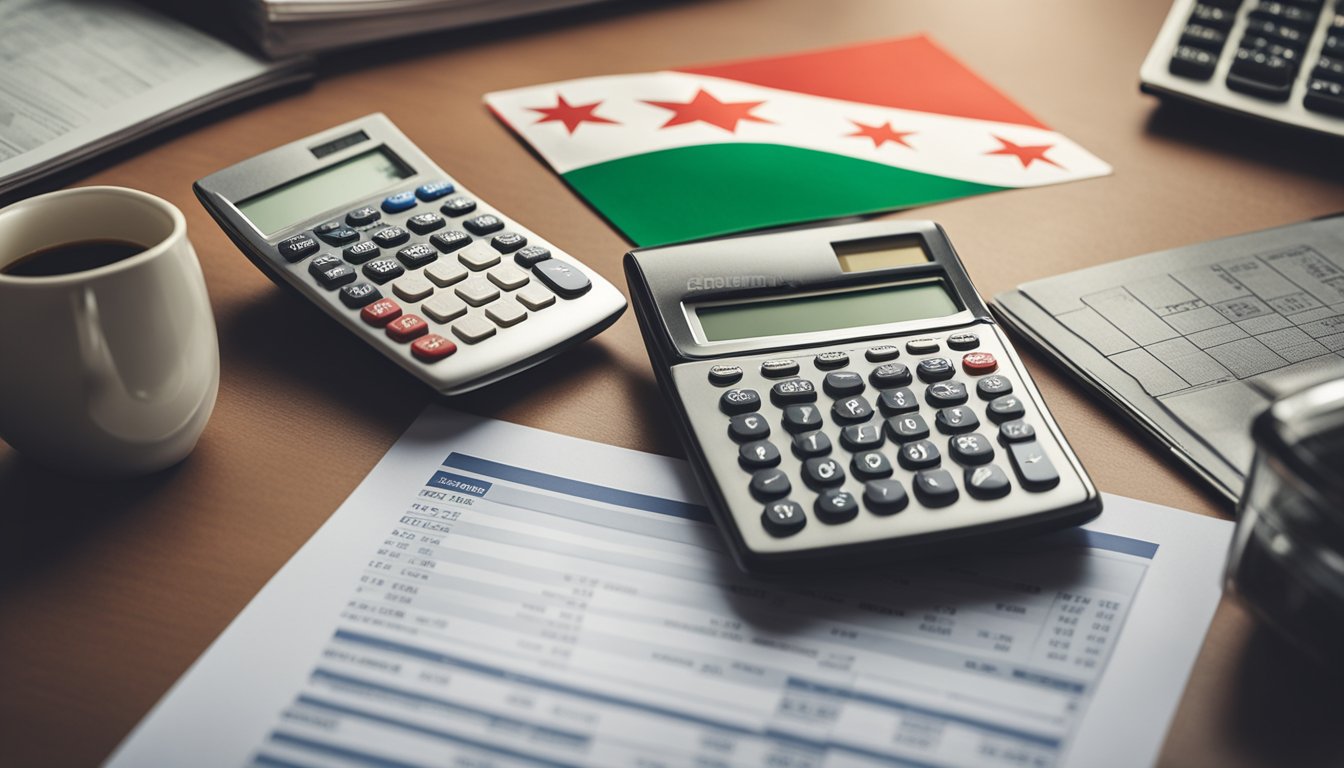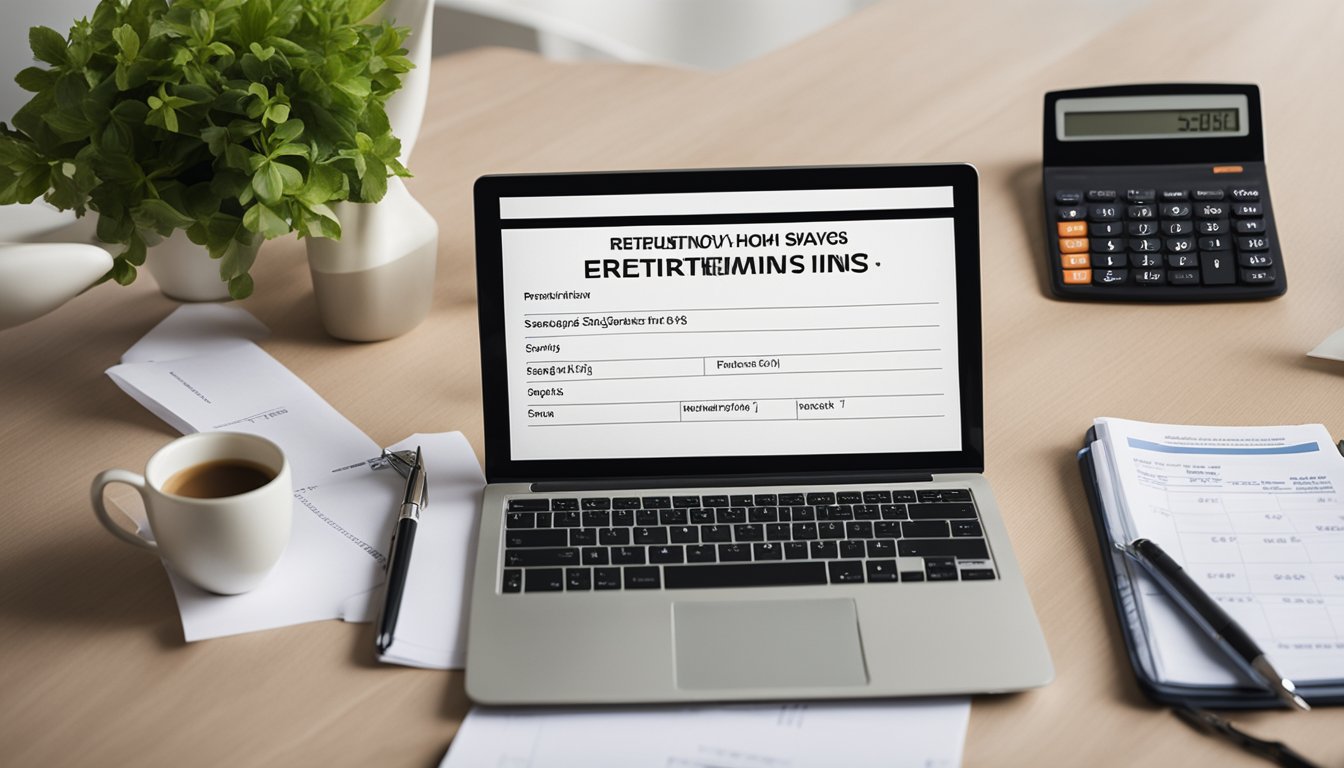Planning for retirement can be a daunting task, especially when it comes to determining how much you need to save. In Singapore, the cost of living is high and healthcare costs are rising, making it crucial to have a solid retirement fund. But how much do you actually need to save to retire comfortably in Singapore?
Understanding Retirement in Singapore

Retirement in Singapore can start as early as age 62 and the official retirement age is 65. The government provides a basic retirement income scheme called the Central Provident Fund (CPF), which is a mandatory savings scheme for all working Singaporeans and permanent residents. However, the CPF alone may not be enough to sustain your retirement lifestyle. That’s why it’s important to have additional savings to supplement your CPF.
Determining Your Retirement Needs
The amount you need to save for retirement in Singapore depends on various factors such as your desired retirement lifestyle, healthcare expenses, and inflation. A general rule of thumb is to have at least 10 to 12 times your annual income saved up by the time you retire. This means that if your annual income is $50,000, you should aim to save $500,000 to $600,000 for retirement.
Key Takeaways
- Retirement in Singapore can start as early as age 62 and the official retirement age is 65.
- The CPF alone may not be enough to sustain your retirement lifestyle, so it’s important to have additional savings to supplement your CPF.
- A general rule of thumb is to have at least 10 to 12 times your annual income saved up by the time you retire.
Understanding Retirement in Singapore

Retirement is an exciting phase of your life, but it can also be daunting. Planning for retirement in Singapore is crucial, given that it is one of the most expensive countries to live in. To ensure that you have a comfortable retirement, it is essential to start planning early.
The Role of CPF in Retirement
The Central Provident Fund (CPF) is a mandatory savings scheme in Singapore that helps individuals save for retirement. It is a comprehensive social security system that provides retirement, healthcare, and home ownership benefits. The CPF system comprises three accounts – Ordinary Account (OA), Special Account (SA), and Medisave Account (MA) – and the Retirement Account (RA).
CPF LIFE is a lifelong annuity scheme that provides a monthly payout from the age of 65. It is a crucial component of retirement planning in Singapore, as it forms the base of your retirement income. The payouts from CPF LIFE are dependent on the amount of CPF savings you have, the interest earned on those savings, and the prevailing CPF LIFE payout rates.
Setting the Retirement Age
The official retirement age in Singapore is 63. However, you can choose to retire earlier or later, depending on your financial situation and personal preferences. It is essential to note that the CPF retirement account can only be accessed from the age of 55.
To ensure that you have enough savings for retirement, you need to meet the CPF Basic Retirement Sum (BRS). The BRS is the minimum sum you need to have in your CPF retirement account to receive a monthly payout from CPF LIFE. As of 2022, the BRS is set at $100,000. If you have more than the BRS in your CPF retirement account, you can choose to transfer the excess amount to your CPF Special Account (SA) or Retirement Account (RA).
Apart from CPF, you can also consider the Supplementary Retirement Scheme (SRS) to save for retirement. The SRS is a voluntary scheme that offers tax benefits for contributions made. The SRS funds can be withdrawn from the age of 62, and the withdrawals are subject to tax.
In conclusion, planning for retirement in Singapore requires careful consideration of your CPF savings, retirement age, and other retirement schemes. By starting early and making informed decisions, you can ensure that you have enough savings to enjoy your retirement years.
Determining Your Retirement Needs

Retirement is a time to relax and enjoy the fruits of your labour, but it’s important to ensure that you have enough savings to cover your expenses. Here are some factors to consider when determining your retirement needs.
Calculating Monthly Expenses
One of the first steps in determining your retirement needs is to calculate your monthly expenses. This includes your household expenditure, cost of living, and basic needs such as food, clothing, and healthcare. You can use online calculators such as the Retirement Calculator to help you estimate your retirement expenses.
Assessing Life Expectancy
Another important factor to consider when determining your retirement needs is your life expectancy. According to a study by the Ministry of Health, the average life expectancy in Singapore is 83 years for males and 85 years for females. This means that you may need to plan for a retirement that lasts 20 to 30 years or more.
Inflation and Its Impact on Savings
Inflation can have a significant impact on your retirement savings. As the cost of living increases over time, your savings may not be able to keep up with your expenses. To combat this, you may want to consider investing in assets that provide a hedge against inflation, such as real estate or stocks.
Overall, determining your retirement needs can be a complex process that requires careful consideration of your savings, income, expenses, and life expectancy. By taking the time to plan ahead, you can ensure that you have enough savings to cover your expenses and enjoy a comfortable retirement.
Strategies for Growing Your Retirement Fund

Retirement planning is an essential part of financial planning, and it is never too early or too late to start. As you plan for your retirement, it is important to consider various strategies to grow your retirement fund. Here are some strategies that you can consider:
Investment Options for Retirement
Investing is one of the most effective ways to grow your retirement fund. Stocks, REITs, ETFs, and dividend investments are some of the popular investment options in Singapore. These investments have the potential to yield higher returns than traditional savings accounts, but they also come with higher risks. It is important to do your research and consult a financial advisor before investing your money.
Maximising CPF Savings and Payouts
The Central Provident Fund (CPF) is a mandatory savings scheme in Singapore that is designed to help Singaporeans save for their retirement. It is important to maximise your CPF savings and payouts to ensure that you have enough funds for your retirement. You can do this by making voluntary contributions to your CPF account, topping up your CPF Special Account (SA) and Retirement Account (RA), and delaying your CPF payouts.
Exploring Annuities and Insurance
Annuities and insurance are another way to grow your retirement fund. Private annuities and whole life insurance policies can provide a guaranteed stream of income during your retirement years. It is important to compare the different options available and choose a plan that suits your needs and budget.
In conclusion, growing your retirement fund requires careful planning and consideration of various strategies. By investing in the right investment options, maximising your CPF savings and payouts, and exploring annuities and insurance, you can ensure that you have enough funds to enjoy a comfortable retirement.
Living the Retirement Dream

Retirement is a time to relax and enjoy the fruits of your labour. It’s a time to do the things that you’ve always wanted to do, but never had the time for. However, in order to truly live the retirement dream, you need to plan ahead and make sure that you have enough savings to support your desired lifestyle.
Planning for a Comfortable Lifestyle
One of the keys to living the retirement dream is to plan for a comfortable lifestyle. This means having enough money to cover your living expenses, as well as any additional activities that you want to do. To do this, you need to have a clear understanding of your retirement lifestyle and how much it will cost.
One way to ensure that you have enough money is to create a passive income stream. This could be through investments, rental properties, or other sources of income that require minimal effort on your part.
Another way to ensure that you have enough money is to be frugal with your spending. This means prioritising your needs over your wants and finding ways to save money on everyday expenses.
Managing Healthcare and Special Needs
As you get older, it’s important to plan for any healthcare or special needs that you may have. This could include things like medical expenses, long-term care, or hiring a domestic helper.
One way to manage these costs is to purchase a comprehensive health insurance plan. This will help to cover any medical expenses that you may incur, and give you peace of mind knowing that you’re covered.
Another way to manage these costs is to plan ahead for any long-term care needs. This could include setting aside money in a separate savings account or purchasing a long-term care insurance policy.
Overall, living the retirement dream requires careful planning and preparation. By taking the time to plan for your retirement lifestyle and managing your healthcare and special needs, you can ensure that you have enough savings to support the retirement lifestyle that you’ve always dreamed of.
Preparing for the Unexpected

Retirement planning is not just about saving enough money to cover your living expenses in your golden years. It’s also about preparing for the unexpected. In this section, we’ll discuss some of the things you can do to prepare for financial shortfalls and unexpected expenses.
Dealing with Financial Shortfalls
Even with careful planning, you may find yourself facing a financial shortfall in retirement. This could be due to unexpected expenses, a downturn in the economy, or other factors. To prepare for this possibility, you may want to consider:
- Building an emergency fund: Having an emergency fund can help you cover unexpected expenses without having to dip into your retirement savings. Aim to save three to six months’ worth of living expenses in an easily accessible account.
- Working part-time: If you find yourself facing a financial shortfall in retirement, you may want to consider working part-time to supplement your income. This could be a great way to stay active and engaged while also earning some extra money.
Retirement Products and Interest Rates
When planning for retirement, it’s important to consider the impact of interest rates on your savings. Higher interest rates can help your savings grow faster, while lower interest rates can slow down your progress. To make the most of your retirement savings, you may want to consider:
- Investing in a fixed deposit: Fixed deposits are a low-risk investment option that can offer higher interest rates than savings accounts. They can be a good choice if you’re looking for a safe way to grow your retirement savings.
- Diversifying your portfolio: To reduce your risk and maximise your returns, you may want to consider diversifying your portfolio. This could include investing in stocks, bonds, and other assets that offer higher potential returns.
In conclusion, retirement planning is not just about saving enough money to cover your living expenses. It’s also about preparing for the unexpected and making the most of your retirement savings. By building an emergency fund, working part-time, investing in fixed deposits, and diversifying your portfolio, you can set yourself up for a comfortable and secure retirement.
Final Considerations

Using a Retirement Calculator
Calculating how much you need to save for retirement can be a daunting task. Thankfully, there are retirement calculators available online that can help you estimate the amount of savings you need to retire comfortably. These calculators take into account factors such as your age, monthly salary, current savings, and expected retirement expenses. By inputting this information, you can get a rough estimate of the amount you need to save to retire comfortably.
It’s important to note that retirement calculators are not foolproof and should be used as a guide only. They don’t take into account unexpected expenses or changes in your financial situation. However, they can be a useful tool to help you get started with your retirement planning.
The Importance of Financial Planning
Financial planning is key to achieving your retirement goals. It’s important to start planning early and regularly review your financial situation to ensure you’re on track to meet your retirement savings goals. This includes creating a budget, setting financial goals, and regularly contributing to your retirement savings.
Singaporeans are fortunate to have the Central Provident Fund (CPF) as a retirement savings scheme. However, it’s important to remember that CPF alone may not be enough to fund your retirement. You should also consider other retirement savings options, such as private annuities or investments.
In conclusion, retirement planning is an essential part of financial planning. By using retirement calculators and regularly reviewing your financial situation, you can ensure that you’re on track to meet your retirement savings goals. It’s important to start planning early and consider all available retirement savings options to ensure a comfortable retirement.
Frequently Asked Questions

Is £600,000 a sufficient nest egg for a comfortable retirement in the Lion City?
When considering retirement in Singapore, £600,000 can provide a reasonably comfortable lifestyle. However, it’s essential to assess your individual circumstances, including your desired standard of living and any potential healthcare costs.
What’s the monthly income needed to embrace a leisurely post-work life in Singapore?
To lead a leisurely retired life in Singapore, a monthly income of around £3,000 to £4,000 is generally recommended. This can cover living expenses, healthcare, and discretionary spending.
Can you lead a lavish retired life in Singapore with £1 million in your savings account?
With £1 million in savings, you can live comfortably in Singapore during retirement. It can provide financial security, allowing for a comfortable lifestyle and the ability to enjoy leisure activities.
What’s the magic number for retiring in Singapore at the spry age of 45?
Retiring in Singapore at 45 requires careful financial planning. While there’s no one-size-fits-all figure, aiming for a retirement fund of around £1.5 million to £2 million can provide financial stability for an early retirement.
How much should the average Singaporean squirrel away for a snug retirement?
For a snug retirement in Singapore, the average individual should aim to save around £800,000 to £1 million. This can provide a comfortable lifestyle and cover essential living expenses.
Is £2.5 million the golden ticket to your dream retirement in Singapore?
With £2.5 million in savings, you can enjoy a luxurious retirement in Singapore. This amount can provide financial freedom, allowing for extensive travel, upscale living, and fulfilling leisure activities.

